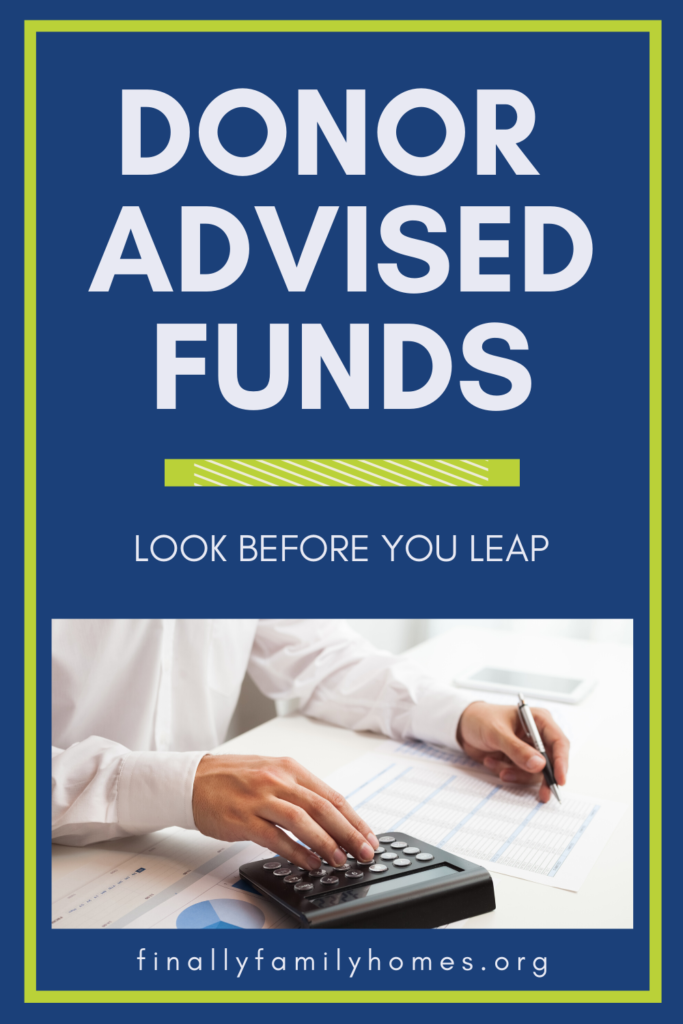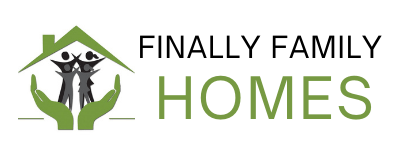Donor-Advised Funds Disadvantages -5 Reasons Why They May Be a Bad Idea
Are you looking into donor-advised funds? You’ve probably heard of some of the advantages, but are you aware of the donor-advised funds disadvantages?
Setting up an account with a donor-advised fund (DAF) can be a useful tool to help you give on a regular basis right now to the charities you believe in while maximizing your tax benefits. But it’s not all sunshine and roses. Donor-advised funds have faced increased public scrutiny in recent years, and for good reason.
This article is for informational purposes and should not be considered legal or tax advice. It’s best to speak to a professional, like a tax accountant or attorney before making any decisions. That said, we did our best to put together a holistic view to help you along in your research as to whether a donor-advised fund is worth investigating further.
Donor-Advised Funds Disadvantages and Advantages
Donor-advised funds aren’t always bad. In fact, they’re a great idea, for some people. It really depends on your situation. For some donors and charities, it may be beneficial, but for others, there are downsides.
Should you use a donor-advised fund instead of directly donating to charity? Be sure to read through both the benefits and disadvantages below.
The Benefits Of A Donor Advised Fund
Donor-Advised Funds can maximize the benefit to donors in certain financial and tax situations. A donor-advised fund allows a donor to increase their charitable impact while reducing their tax liability. It is owned by a sponsoring charity, but as the donor, you get the right to advise how the account is invested and how the money is distributed.
Grow Your Gifts Tax Free
Your donation can grow tax-free before being distributed to your charity. Let’s say you have $100 to donate. Instead of donating the $100 directly to the charity, you can place it in a donor-advised fund. You get the tax benefit today for donating $100, but in the fund, let’s say it grows to be worth $125. You don’t pay any taxes on that growth and the charity gets $125.
However, if you had put that same $100 into a taxable investment and grown it to $125 before donating, your donation would be reduced by the amount of tax owed. So, if your tax rate is 15%, the charity would only get $106.25, instead of the $125 they would receive through the fund. Additionally, using a taxable investment account could increase your income and bump you up to a higher tax bracket.
Strategically Time Your Donations
Donate at the best times for you, while the charity receives consistently. If you donate even half of the amount you could itemize for in a given year, you could benefit from a donor-advised fund.
Let’s say you are married and donate $20,000 in 2018 and $20,000 in 2019 directly to charities like Finally Family Homes. Since the standard deduction each year for married filing jointly has been over $20,000, you would get no tax benefit for your donations.
Alternatively, you could donate $40,000 in 2018, and recover in 2019 by not giving at all. In 2018 you would a deduction, but in 2019 you would not. Over the course of the 2 years, your giving is the same. In 2020 and 2021 and in the years that follow you can continue with the same intermittent giving, getting tax benefits. The problem is your charities get inconsistent support and can’t plan their budgets.
Enter in the donor-advised fund. Using the same strategy of giving extra in 2018, but this time to a DAF, you can then have your fund donate a consistent amount monthly for 2018 & 2019 while reaping the tax deduction in 2018. As you continue on through the years taking a tax deduction every other year, your charity is able to receive funds consistently. Not only this, but while your money is in the fund, it’s growing.
Reap Tax Benefits
By donating stocks, mutual funds, or property to a donor-advised fund, you can avoid any tax on the appreciation of these assets & donate the full amount to the charity of your choice. Schwab does a great job of explaining in detail all that you can donate and what is potentially deductible here.
So, let’s say you put $100 in an investment account and it doubled in the last year. Instead of paying an average capital gains tax of $22, and then donating the $178 to charity, you could donate the full $200 investment to charity. Not only do you not pay the tax, but you donate more and get credited $200 as a charitable deduction.
Streamline Your Giving
If you give to multiple charities, you can track your donations all in one place. Additionally, instead of tracking receipts from multiple charities, you’ll get one receipt with your total donations summed up.
There are even more benefits, like possibly avoiding or reducing capital gains taxes on appreciated assets that you should ask your tax advisor about.
5 Reasons Why Donor-Advised Funds Are Bad
While the above-mentioned advantages might make you want to jump right into a donor-advised fund right now, there are some disadvantages worth considering first. Every situation is different – so some of the advantages or disadvantages may not apply to you.
For instance, maybe you’re only giving to one place, so there’s no need to “streamline.” Or maybe you are planning to donate a large enough sum that account minimums aren’t a worry for you. Situations change though, so it’s important to be aware of the potential donor-advised funds disadvantages should you decide to open a giving account.
Secrecy
Everything we are sharing here is available to the public. But there are many advisory fund sponsors who keep a few too many details undisclosed for our comfort. What are the fees? How is it managed? These are unclear.
In addition, there is an option to donate to organizations without anyone else knowing besides the sponsor. This could be a benefit for those who value their privacy. But for others, this could be a way to heap large sums of money on something shady.
Account Minimums
Many sponsoring charities require a minimum donation to start the account. Starting an account at Fidelity Charitable or Schwab Charitable requires an initial minimum donation amount of $5,000. Vanguard Donor-Advised Funds require $25,000 to open a charitable account
In addition, there also minimums for amounts of money that can be added in additional contributions. Schwab requires $500 or more. Vanguard requires a minimum of $5,000 per additional contribution. Fidelity has no minimums.
Fees
Administrative fees are charged by the sponsors for running the account. This includes operating costs such as legal, accounting, processing, and staff. The fees vary based on the sponsoring charity and the amount of the assets given.
Last we checked, Fidelity Donor-Advised Fund fees are on par with Vanguard Donor-Advised Funds fees. They both charge 0.6% (or $100 year at whichever is greatest) for the first $500,000 in a donor-advised fund, above & beyond this, fees decrease. Schwab donor-advised fund fees are charged based on this fee calculator.
In addition, all donor accounts accrue investment fees. These are fees for managing the investments themselves. Fidelity Donor-Advised Fund fees for investing range from 0.015% – 0.99%. At Vanguard the fees also vary within a range & the average stated investment fee is 0.1%.
Money Can Get “Stuck”
If you set up a donor advised fund, but don’t allocate your funds to specific charities, the money can linger there, not benefiting society. This can be avoided by choosing your charities before or during setting up your DAF. If you’re not sure, don’t worry, you can change your allocations anytime.
That said, the current situation is troubling on a national scale. According to a recent article in the Chronicle of Philanthropy, over $110 billion is sitting in donor advised funds – already given by donors, but not distributed to charities.
You Have Less Control
After donating your money, you’ve essentially given up control, but retain at the discretion of the sponsor, the ability to decide what happens next with the money you’ve given.
Technically, it’s no longer yours and you definitely can’t get it back.
Schwab allows you to choose from a shortlist of funds. You can pick from a few “pre-allocated investment tools” such as TRSGX, (a growth fund) or single asset investment classes which include index pools, actively managed pools, and a money market pool.
Vanguard has a similar setup with a shortlist of funds to choose from and it wasn’t easy to find exact details at Fidelity, but I would guess a similar setup. For the savvy investor, you may find the options too limited.
There’s definitely no option to be a stock picker.

Donor-Advised Fund Grant Restrictions
As far as getting the money to your charity, this is done through grant recommendations. You recommend the charity and the sponsor complies by sending money to the charity in the form of a grant.
Legally, they don’t have to do anything though. Some have worried about this issue, but so far there have been no reported issues of sponsoring charities refusing to donate in accordance with the original donor’s wishes.
What you are limited on is the minimum amount donated at a time to a charity. Both Fidelity & Schwab require a minimum of $50 per charity. Vanguard requires that money is granted in amounts of $500 or more per charity.
How Donor Advised Funds Make Money
Donor-Advised Funds make money the same way that any investment account grows money – through stocks, bonds, and interest-bearing accounts. And they are also prone to the risks of market down-turns. This means your donation can lose value and the destination charity may receive less than what you donated.
However, by choosing how you want to invest your donation, you can mitigate some of this risk. If your donation sits in a very low-interest account for too long before being granted out, you do also risk losing some value to inflation.
Short List of Donor Advised Fund Sponsors
Fidelity Charitable, Schwab, and Vanguard are the biggest players among sponsoring charities, but they aren’t the only options. Other top sponsoring charities offering donor-advised funds are the American Endowment Foundation, Banks like Bank of America, BNY Mellon, and Wells Fargo also have options for setting up a giving account.
Some larger charities have set up ways to receive non-cash assets directly. If you primarily support one charity, it’s probably best to set up with them to minimize the costs of having a middle man.
How to Support Finally Family Homes Through a DAF
As a 501(c)3 in good standing, Finally Family Homes is able to receive money directed through Donor Advised Funds. And we would be grateful to have your support on our mission to serve former foster youth who are facing homelessness. To support through your established DAF, just follow the instructions below.
- Click the link to the left
- Type in and select the Sponsoring Charity where your account is hosted (Fidelity, Vanguard, etc)
- Log in to your account and add Finally Family Homes and the amount you wish to grant.
Please note: If your DAF is with a different entity, you may have to process your donation through their website.
My Thoughts As A Donor and Non-Profit Director
Again, please don’t take this as advice, but just as a personal opinion from a unique perspective. I think giving accounts through Donor-advised funds are tools. And like any tool, it works well when used properly and has a potential for harm with it’s not. Personally, since I own stocks I decided to start giving to Finally Family Homes through a Donor-Advised fund.
If you have certain situations like taxable appreciated stocks or inconsistent income both you and the charities you support can certainly benefit. If you are already a regular supporter (monthly giving is the most helpful) of a non-profit like Finally Family Homes, and you don’t have other special circumstances, it’s probably best to continue giving directly.
Give to Finally Family Homes directly here.
And the truth is that no matter how you choose to support the charity whose mission touches your heart and inspires you, giving is beneficial for you, them, and the ones they serve.
Do you contribute through a donor-advised fund? Do you think you will now?
For more on increasing your financial status
Read Our List of Top Online Jobs for 2021
Learn More About What We Do At Finally Family Homes
Challenges Aging Out Foster Youth Face
Learn How You Can Get Involved







